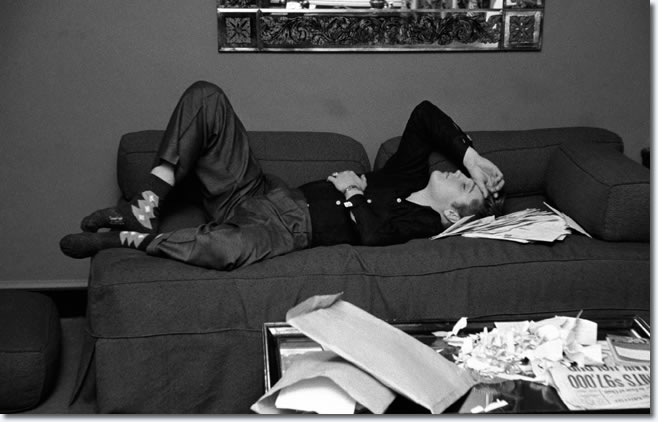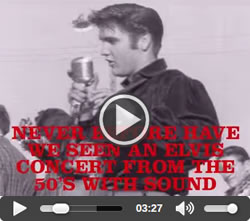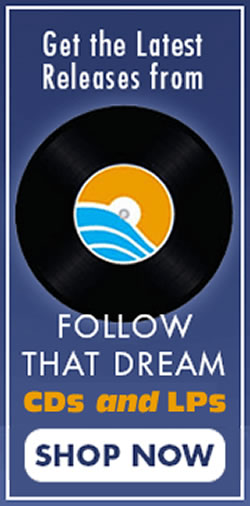Interview With Photographer Alfred Wertheimer
Source: www.elvis.com.au
August 12, 2023
Interview With Photographer Alfred Wertheimer
Q) How did you get the job photographing Elvis Presley?
A) I got a call from Ann Fulchino with RCA Victor in March of 1956. She asked me if I was available for a shoot on March 17 at Studio 50, which was one of the CBS studios. I said I was available and asked what she wanted me to photograph. Ann said it was for the Dorsey Brothers Stage Show. I said 'That's great. Tommy Dorsey is one of my heroes'. That's when Ann told me she didn't necessarily want me to photograph Tommy Dorsey. She said 'I want you to photograph Elvis Presley'. I said Elvis who? I had never heard of him!
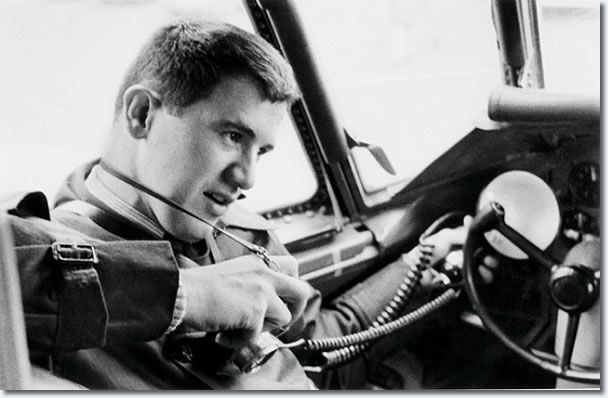
Above, Alfred Wertheimer in 1956 (on an airplaine).
Q) Tell us about your first meeting with Elvis
A) It was at the rehearsal for the Dorsey Brothers Stage Show. I was brought to Elvis' dressing room and there were two people sitting inside. One was a young man and one was a middle-aged man. The middle-aged man was showing the younger man a line of jewelry and the younger man kept looking at his right hand. Ann said to the younger man, 'Elvis, this is Al Wertheimer. He'll be taking some pictures of you. I hope you don't mind'. Elvis just kept looking at his hand and says 'Yeah, that's ok. Why not?' Of course at that point Elvis didn't have a gold record, so he was just a well-known regional singer. I soon realized what he was looking at was his brand new gold horseshoe ring. Since he wasn't very talkative with me and was focused on his ring, I decided to take out my two cameras and become like the fly on the wall. I started taking photographs.
Q) Tell us about that rehearsal
A) Elvis' job on that show was to perform for six minutes, or two songs. Elvis took the stage with his trio - Bill Black and Scotty Moore. They went through the songs and I could see that Elvis was really holding back. When he was rehearsing, Elvis was one kind of temperament, and when he was on stage during the actual take, he was very different. During the rehearsal, he was getting some advice from the back of the theater, from two William Morris agents. There's this one picture I love very much where each one of the agents is on one side of Elvis and he's getting advice from both. And he's taking this advice. It's astounding that he would even allow some of them to put their hands on him. The basic advice that was being given at that time was 'Don't wiggle around so much. Be very careful about what you do below your waist'.
Q) How many times did you work with Elvis and how many photos did you take of him?
A) I have approximately 2,500 images of Elvis and that's from a period of two groups of shootings. Several were taken throughout 1956 and then I met up with him again on September 22 ,1958 on the day he left at the Brooklyn Port of Embarkation for Germany as a soldier in the U.S. Army. All in all, I had eight shooting days with Elvis. A lot of people feel that I captured more of the essence of Elvis than anyone else. The only thing I wanted Elvis to do was to be himself. Everyone else had something they wanted him to do.
Q) Were you surprised at they way people, especially young women, reacted to Elvis?
A) I didn't understand it, but I took the attitude that even if you don't understand, keep shooting.
Q) What is your favorite photograph of Elvis?
A) There's one that's very little known. I call it 'Gentlemen, What Would You Like?' It's a picture of a waitress just standing there with her little pad and pencil and she's looking at Junior Smith and Junior Smith is looking back at her. And Elvis is asking 'What do you have?' He's in a restaurant and he's really paying more attention to her than to what she's saying. Five minutes later, Elvis had her arms around her waist.
Another shot that I like a lot is where Elvis is on the train. I call the photo 'One-Eyed Jack'.
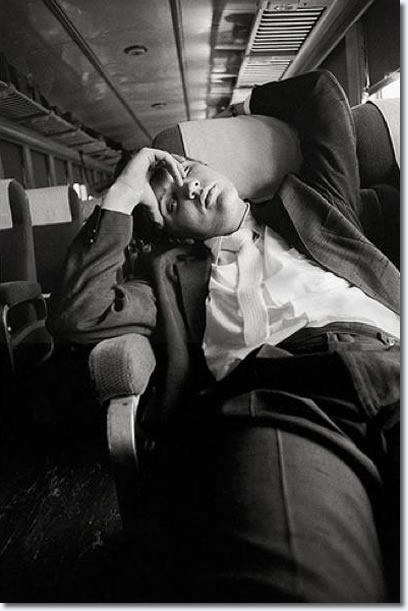
Two hours outside of Memphis heading to his home, July 4, 1956.
He's got one-eye open and he's looking dead-on at me. I'm shooting him from about two feet away. It's almost like he's saying 'I've got an eye on you, so watch yourself'. One of the most popular pictures of course is 'The Kiss', but I like the one that was taken prior to 'The Kiss' where Elvis overshot the mark and bent the poor girl's nose. There's also a few other pictures where Elvis is messing up the girl's hair because he hated hairspray. Elvis permitted closeness. He permitted you to go as close as three feet from his face and he wouldn't act any different than if you were twenty feet away. He was able to focus so much on what he was doing. He also made the girls cry. Anytime a performer can make the girls cry, he's a winner. Because you can make them jump, scream, yell... you can make them do all kinds of things through public relations. But you cannot make them cry. Crying is an emotion that comes from deep down and Elvis was able to reach deep down.
![]() Elvis Presley : Mosque Theater, Richmond, Va : June 30, 1956
Elvis Presley : Mosque Theater, Richmond, Va : June 30, 1956
![]() Elvis Presley : On The Train to, Memphis, Tennessee : July 3, 1956
Elvis Presley : On The Train to, Memphis, Tennessee : July 3, 1956
![]() Elvis Presley : Russwood Park, Memphis, Tennessee : July 4, 1956
Elvis Presley : Russwood Park, Memphis, Tennessee : July 4, 1956
Q) What was your relationship with Elvis like?
A) I used him and he used me in a symbiotic way. You see, he was almost at the point where he was being recognized as a national star, but not quite. I'll give you an example.
Once, in a railroad station in Chattanooga, Tennessee, we were waiting to change trains. Elvis went over to a magazine rack and picked up a movie magazine. He found a photo of himself inside and says to me 'Al, can I have a pen?' I gave him one and he scribbled his name inside the magazine. Then he goes over to the two girls working at the magazine rack. He had the spread open to his picture, showing it to them. He's also looking back at me with a huge Cheshire Cat grin. Their reaction was 'That'll be 35 cents sir'. (laughing) Elvis said to them 'No, this is for you. I'm Elvis Presley'. Finally the girls agree that it is. In the meantime, I'm capturing pictures of all of this, which is really what Elvis wanted. He knew one day that he would be very famous, and he wanted to capture on film these kinds of moments.
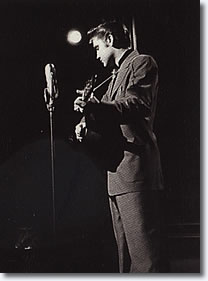 |
|---|
Photographing Elvis
RCA Victor Records bought Elvis' contract from Sam Phillips for $40, 000 in December 1955. Their new artist was hot in the mid-south and southwest, but unknown in the rest of the country. So, it was important for them to get Elvis booked on national TV. On January 28, 1956, Elvis made his first of six appearances on Stage Show, which starred Tommy and Jimmy Dorsey. About halfway through this engagement, RCA realized they had nothing in their photo file on Elvis. They needed to get a few publicity shots.
In early 1956, Al Wertheimer shared a studio with six other photographers. One of them, Paul Schulzer, introduced him to Ann Fulchino in the Public Relations department of RCA Victor Records. She put Wertheimer on a list of free-lance photographers she would call as various assignments came up. When jobs went out to people, they would move to the bottom of the list. Al Wertheimer happened to be on the top of that list when she needed the Elvis pictures, so he got the call. She asked if he was free on March 17 to take some shots at the Dorsey Brothers show. Wertheimer was a fan of big band music, so he jumped at the chance. Then she told him he would actually be photographing Elvis Presley. After a pregnant pause, Wertheimer said, 'Elvis who?' He had never heard of Elvis Presley.
He also had no clue how drastically this job would change his life.
It was just a one-day assignment at the rehearsal and telecast of Elvis' fifth Dorsey Brothers Stage Show in New York. RCA wanted photos for release to newspapers: head shots; Elvis at the microphone; Elvis with fans; or, best of all, Elvis with celebrities. Al Wertheimer took the required photographs, but he didn't stop there.
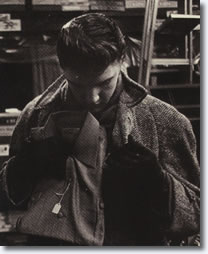 |
|---|
|
Elvis : March 56 New York
|
By the time he parted company with Elvis that night, Wertheimer had snapped over 400 photos of Elvis, nearly all of which caught casual off-stage moments. Wertheimer was able to shoot before, during and after the Dorsey show rehearsal, as well as back stage before the live telecast.
But, in between the rehearsal and the national telecast, Elvis had hours of free time, and Wertheimer tagged along for every bit of it.
They walked back to the Warwick Hotel together. Along the way, there was a stop at the Supreme Men's Shop where Elvis considered several shirts but purchased none. Then, it was up to Elvis' suite. At that point, Elvis had known Wertheimer for only five hours, but he obviously felt comfortable around the young photographer. Elvis stretched out on the couch and looked through 200 fan letters he dumped out of a sack. Wertheimer took more shots, then settled into a nearby chair and fell asleep.
Sometime later, Wertheimer woke up to the buzzing of an electric razor. Elvis had showered and was getting ready for the TV show. Wertheimer asked if he could step inside the bathroom and snap more pictures (Elvis had pants on), and that was fine with Elvis. Soon, Wertheimer got to observe from the closest perspective the nuances of Elvis doing his hair combing ritual.
Elvis performed 'Money Honey' and 'Heartbreak Hotel' on the Dorsey Show that night. After the TV telecast was over, Elvis left through the stage door and was surrounded by approximately 100 screaming teenage girls. Wertheimer suspected that Ann Fulchino of RCA had encouraged this by contacting local fan clubs, but he could tell the enthusiasm was genuine. Elvis launched into serious autograph signing, obviously loving every minute of it. Al Wertheimer climbed on an up-side-down trashcan and clicked away from behind what he called 'this sea of hair'. After Wertheimer was back on the ground, a girl asked him 'Are you anybody?'
Sadly, he had to tell her 'No'.
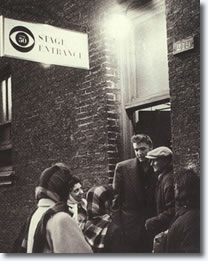 |
|---|
Wertheimer turned in to RCA Victor the dozen shots he felt were best suited to their needs. They licensed the rights to use them for promotional purposes like press kits, or to put them on the back of future album covers. RCA also got what are called 'Contact Sheets', Each one contained the images from a roll of his film, and they provided an inventory of other available photos. However, all the negatives belonged to Al Wertheimer. He didn't know how much good these pictures would do him, but he had a hunch.
Right, when Elvis finished his March 17 performance on Stage Show there were only a hand full of fans at the stage door for autographs. In just a matter of weeks, the relative calm of this photograph would be replaced by a frenzy of fan attention that last for the rest of his life.
Two months later, Alfred Wertheimer was hired for a second round of photos. Elvis was all over the news then. There had been a national outrage over his wild performance of 'Hound Dog' three weeks earlier on his second Milton Berle Show appearance. Elvis' gyrating hips were blasted as 'suggestive and vulgar' by dozens of newspapers and hundreds of preachers in pulpits.
No sooner was rehearsal over, when Elvis and crew headed to Penn Station to board a train. In the day-and-a-half opening between the rehearsal and the actual Steve Allen Show telecast, they had to ride overnight to Richmond, give two concerts, and ride the train back to New York. This was precision logistics thanks to Col. Parker, who also put no restrictions on Wertheimer during the train rides. Wertheimer had free reign during the Richmond concerts, too, because Col. Parker spent the whole time up-front dealing with business matters.
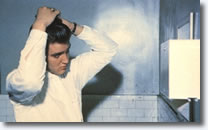 |
|---|
It was during the Richmond performances that Wertheimer had his real epiphany about Elvis. While Elvis sang, Wertheimer watched the audience and was amazed at how many teenage girls were crying -- hugging each other and crying. Wertheimer now says, 'In my experience, nobody's ever made the girls cry. They've made them jump, scream, yell, cheer, but not cry …
That was my clue. Anybody who could make the girls cry is going to be a huge success. And, I better stick around'. Once the train arrived back in New York, they all headed to the Hudson Theater where the Steve Allen Show originated. During the dress rehearsal, Elvis had fun with the basset hound, and Wertheimer got a whole sequence of shots. Steve Allen was determined that nothing like what happened on the Berle show would happen on his. The tuxedo and the basset hound on a pedestal effectively cut down on the movements Elvis could do. Wertheimer observed that Elvis knew he was being controlled but was a good sport about it. That night Elvis performed two songs, 'I Want You, I Need You, I Love You' and 'Hound Dog'.
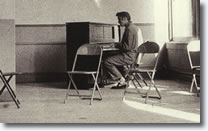 |
|---|
The next day Wertheimer accompanied Elvis to the RCA Victor recording studios in New York and witnessed the birth of 'Hound Dog' and 'Don't Be Cruel'. Colonel Parker was not at this recording session, allowing Wertheimer more unimpeded access. This time, Wertheimer brought two rolls of color film along, as well as all the usual black-and-white.
That turned out to be a smart move. Later that year, he licensed the rights for one of the color photos to TV Guide for the first of their many Elvis covers.
He received $250, big bucks back in 1956.
The next day was July 3, and Elvis had a benefit concert to do in Memphis on the night of the Fourth of July. So, it was back to Penn Station to start a twenty-seven hour train ride to Memphis. This trip was unlike the train rides to and from Richmond. They were at night and everybody slept. This trip provided daylight travel during large portions of two days. Wertheimer got to spend lots of time with Elvis – and the Colonel.
Wertheimer took some shots of Colonel Parker. Although it may not have been intended, this warmed up Parker, and he and Wertheimer had several good conversations. After watching Col. Parker in action and talking with him, Wertheimer said, 'This guy is pretty smart. He's thinks like a chess player. You know, he's thinking way ahead – three or four moves ahead. He has a great understanding of cause and effect'
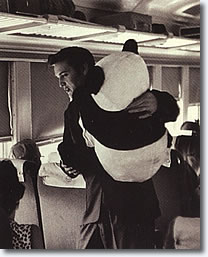 |
|---|
There has to be some hi-jinks on a long train ride, and this trip had some. A huge stuffed Panda showed up from nowhere. Wertheimer thought maybe the Colonel snuck it in. Elvis and the guys loved it. The Panda moved around and got used as a pillow a lot, but it always had his own seat next to somebody. That night, Wertheimer went to Elvis' compartment, where he was listening to acetates of the recent recordings. The Panda was on his upper berth, strapped in with its legs coming through the webbing.
The next day Elvis put the Panda on his hip and walked down the aisle of the passenger car. It became a prop as he flirted with the girls on board.
When two teenagers didn't believe he really was Elvis, he pointed to Wertheimer and said, 'See that photographer over there? Would he be taking my picture if I wasn't Elvis Presley?'
Wertheimer was now traveling on his own tab. He took it upon himself to complete his Elvis photo story by accompanying Elvis to Memphis to see him at home with his family. When the train arrived in Memphis, Wertheimer got to spend the afternoon hanging out at Elvis' recently-purchased house at 1034 Audubon Drive.
Gladys and Vernon had no problem with Wertheimer coming into their home and snapping all kinds of pictures. He got along so well with Gladys that historians consider him an authority on her. He says, 'I seemed to become the resident expert on Gladys Presley, even though I was only around her a few hours'. Wertheimer was interviewed extensively about her for a book, and Elvis Presley Enterprises has also gone to him to get a sense of what she was like and her relationship with Elvis.
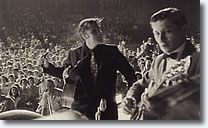 |
|---|
| Elvis : Russwood Stadium : July 4, 1956 |
At 7:30 that night, Col. Parker showed up at Elvis' home. Shortly after that, the local Sheriff arrived. He drove Elvis, Parker, and Wertheimer to Russwood Stadium for the homecoming concert. Wertheimer got one shot in the squad car and dozens at the concert. This was Elvis' triumphant return home. As he told the 14, 000 fans, 'You're going to see the 'real' Elvis Presley'.
When it was over, the Sheriff drove Elvis home, and Col. Parker took Wertheimer to the train station.
During the two-day trip back to New York, Alfred Wertheimer had time to reflect on what had happened during the past six days: a TV show rehearsal and telecast, a concert in Richmond, a major recording session at RCA Victor, three long train rides, an afternoon with Elvis' family at their home, and a big holiday concert in Memphis. To simply share all that with Elvis would be reward enough, but Wertheimer also had rolls and rolls and rolls of film.
The exact number of pictures has been subject to speculation and two earlier magazine articles on Wertheimer used the round number of 4000. He says this is too high; that what really counts is the number of marketable photos. After culling out the unusable shots (too dark, out of focus, etc.), Wertheimer says he has 2053 photos to license for future commercial ventures.
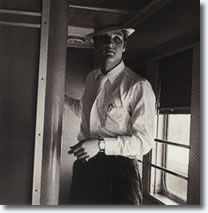 |
|---|
Wertheimer abstained from using flash bulbs.
He took the attitude of being 'a fly on the wall', unnoticed and able to catch the casual un-posed moments. So, he used two small and very quiet 35 mm Nikon S-2 Rangefinder cameras with no flashes, which kept Elvis oblivious to Wertheimer's presence most of the time.
In the picture at right you see Elvis amusing his companions on the trip with an impersonation of The Colonel. According to Wertheimer, Elvis took the Colonel's hat, tilted it to one side and began barking orders in an exaggerated Southern drawl. The Colonel oblivious to it all, just keep on talking. Elvis shrugged his shoulders and put the hat back on the rack.
Without a flash, it was often necessary for Wertheimer to use very slow shutter speeds to get enough light for a good exposure. This technique is called using 'available light', but Wertheimer pushed it to extremes and coined the phrase 'using available darkness'. He says, 'The darker your environment, the more people let it all hang out'.
That certainly worked with Elvis.
Wertheimer's photos of Elvis have now appeared in countless books, calendars, watches, posters, and gallery prints. The book Elvis '56, published in 1979, is a remarkable collection of Wertheimer's pictures that, as one critic noted, 'Had the intimacy of a diary and the authority of a historical document. Elvis '56 is also the title of a 1987 video that used about four hundred of Wertheimer's images, many of which have not appeared in print.
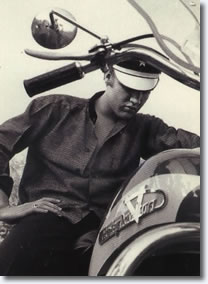 |
|---|
One of Wertheimer's most famous photos is Elvis wearing a cool motorcycle cap and sitting on his Harley Davidson. ![]()
If you're an Elvis fan, you've seen this picture. It was taken at Elvis' first house at 1034 Audubon Drive on July 4th, 1956, minutes before he took a few of the fans for short rides around the area.
Wertheimer finally got up enough nerve to ask if Elvis would take him for a ride, too. Elvis agreed and off they went. Not for just a few blocks, but for a good long ride out into the suburbs. Naturally, Wertheimer took along his camera, but he had already snapped many photos, so there weren't too many shots left. And he did not bring any extra rolls of film.
Although Wertheimer had taken almost 4, 000 photos of Elvis during the previous week, he had no shots of himself and Elvis together. He tried to correct that while they zipped along on the cycle. He held the camera out as far as he could with one hand and shot back toward their faces. It was a big guessing game as to the proper angle and alignment, so Wertheimer moved the camera around and kept snapping until he ran out of film.
A few minutes later, Elvis' Harley ran out of gas.
Wertheimer expressed concern that this could be a problem, because Elvis had a huge holiday concert due to start in a few hours. However, Elvis told him not to worry, something would happen to solve their problem – and it did. A young mother and her three-year-old daughter passed them, and she quickly slammed the car to a stop. She recognized Elvis, just like he figured somebody would.
Once Elvis explained the problem, she drove off, and in short order, she was back with a jerry can of gasoline. Elvis filled up the Harley's tank, and they were ready to go. Elvis never offered to pay for the gas, but when he thanked the lady, he gave her a big kiss (Do you think she would have preferred cash over that?). He walked around to the other side of the car and kissed the little girl, too.
Wertheimer was so frustrated because he had no film to capture these charming moments.
He was even more frustrated when he developed the prints and discovered his guesses at the correct shooting-backward camera positions were all wrong. He got Elvis' cap, his nose, and a few full-face shots of Elvis, but none contained his own face, too. Oh well, at least he got to ride on the Harley with Elvis.
How many people can say that?
Elvis Departs For Germany
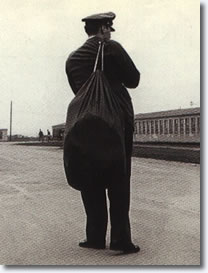 |
|---|
When Elvis was drafted into the Army in 1958, the press reported he would be treated just like any other GI. Perhaps he was during basic training in Texas, but when it was time for him and 6, 000 other soldiers to board a troop ship in New York Harbor, strange things happened. Col. Parker made sure Elvis' send-off was a big event.
For one thing, it was estimated that 250 reporters, photographers, and cameramen were on the scene. One of them was Alfred Wertheimer, who had taken thousands of photos of Elvis back in 1956. This time, he did not have an exclusive, but he got plenty of good pictures. He was also in position to see the master marketer, Col. Tom Parker, in action.
Wertheimer didn't know if the official Army Band was present at all major troop deployments, but they were there the day Elvis shipped off. Perhaps Col. Parker arranged for their appearance, perhaps not, but he still engineered a first in Army history. He printed up copies of the music to several Elvis songs and passed them out to all the musicians. Songs they played that day included 'That's All Right', 'Hound Dog', 'Don't be Cruel', and others that Wertheimer can't remember. No John Phillip Sousa marches to mark this occasion. Dressed in full Army parade uniforms, the band played Elvis rock & roll.
Elvis held forth with a half-hour press conference. Who but Col. Parker could have arranged this? He probably worked out a deal with the Army brass, because Elvis stood in front of big 'Join the Army' posters. There was one Army General who would not leave Elvis' side. He enjoyed being in the spotlight so much that he hovered around Elvis the entire time. The hoards of photographers and cameramen wanted to get film of Elvis going up the ramp from the dock to the second deck of the ship. Five soldiers were selected to join Elvis in the shot to make it look natural. Of course, Elvis was carrying going-away presents as well as his duffel bag. He was also in his dress uniform, while the other guys were in fatigues. When one cameraman flubbed the shot, he asked them to repeat the trek up the ramp. Wertheimer couldn't believe it when they actually complied.
The ship had four decks and soon Elvis appeared on the top one – along with Col. Parker. Wertheimer wondered to himself, 'What is Parker doing on a troop ship?' To give something to Elvis, it turned out. Elvis opened a box from Parker, and guess what it contained? Dozens of playing-card-sized autographed photos of Elvis. Then, Elvis flipped then one-by-one over the railing, and they fluttered down to lucky fans standing on the dock four decks below as the band played 'Hound Dog'. Just your average troop deployment.
© Copyright 2024 by www.elvis.com.au & www.elvispresley.com.au
![]() https://www.elvis.com.au/presley/interview-with-photographer-alfred-wertheimer.shtml
https://www.elvis.com.au/presley/interview-with-photographer-alfred-wertheimer.shtml
No part of any article on this site may be re-printed for public display without permission.
 Tupelo's Own Elvis Presley DVD
Tupelo's Own Elvis Presley DVD
Never before have we seen an Elvis Presley concert from the 1950's with sound. Until Now! The DVD Contains recently discovered unreleased film of Elvis performing 6 songs, including Heartbreak Hotel and Don't Be Cruel, live in Tupelo Mississippi 1956. Included we see a live performance of the elusive Long Tall Sally seen here for the first time ever. + Plus Bonus DVD Audio.
This is an excellent release no fan should be without it.
The 'parade' footage is good to see as it puts you in the right context with color and b&w footage. The interviews of Elvis' Parents are well worth hearing too. The afternoon show footage is wonderful and electrifying : Here is Elvis in his prime rocking and rolling in front of 11.000 people. Highly recommended.
Tupelo's Own Elvis Presley DVD Video with Sound.



